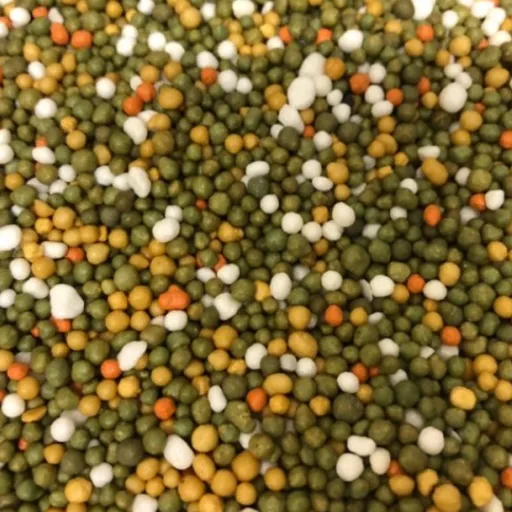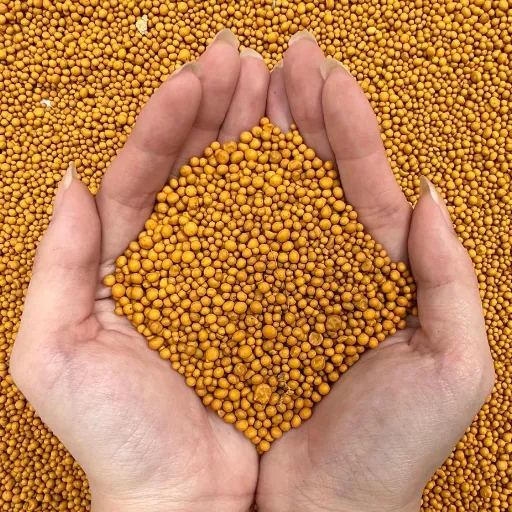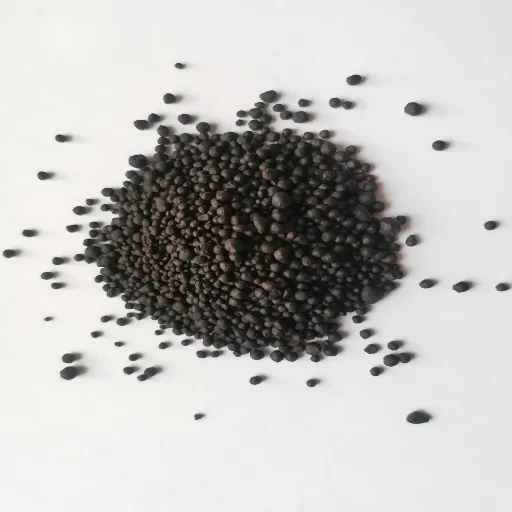To different consumers, gardening is different: some nurture it as a hobby, some treat it as a profession. Providing the right nutrients for plants to grow is the core of the gardening art. Osmocote Fertilizer has somehow risen to a position of a favorite amongst people looking for a balanced and renowned fertilizing product for their flowers and vegetables.
This article throws light on the characteristics of Osmocote, describing why the product stands out as an organic plant food option, and how it brings forward luscious flowering and healthy yields. Whether you are pumping your gardening muscles a bit or starting with your first bag of dirt, this article will provide you with the knowledge to enhance plant productivity or battle-brittle plants by the application of Osmocote Fertilizer.
Understanding Osmocote Fertilizer

What is Osmocote?
Osmocote fertilizer is defined as an artificial fertilizer, enriched with nutrients for cultivating plants. With osmocote release factors, the release of nutrients is prolonged and time-dependent, and the nutrient availability is synchronized to the growth stages specific to certain plants. Therefore, it prevents the operational over-fertilization or wasting of nutrients and stands behind an efficient and friendly working environment for any gardener.
Osmocote features resin-coated granules with a balanced nutrient mix of some major nutrients like nitrogen, phosphorus, and potassium plus trace elements. Water can pass through the coating when the product is applied, dissolving the nutrients and releasing the substances into the soil over weeks or months, depending on the formulation.
Key Benefits: The steady release procedure contributes to excellent root growth, lively foliage, and fruiting or flowering on plants. Osmocote suits many plants, including flowering plants, shrubs, vegetables, and trees.
Composition of Osmocote Fertilizer
Osmocote fertilizer consists of a balanced composition of essential macronutrients and micronutrients, all embedded within a specially designed coating for slow release.
| Nutrient Category | Components | Function |
|---|---|---|
| Macronutrients (NPK) | Nitrogen (N), Phosphorus (P), Potassium (K) | Essential for plant growth, root development, flowering, and fruiting |
| Micronutrients | Magnesium, Iron, Calcium, Zinc | Support chlorophyll synthesis and enzyme activation |
| Coating Technology | Organic resin coating | Controls nutrient release based on temperature and moisture |
Advantages of Using Osmocote
- Controlled Nutrient Release: Nutrients are released over 4-12 months, enhancing nutrient use efficiency by up to 30% compared to standard fertilizers.
- Reduced Environmental Impact: Slow, predictable nutrient release drastically decreases nutrient runoff, preventing ecological damage to surrounding ecosystems.
- Balanced Nutritional Profile: Perfect blend of macronutrients and trace minerals. Osmocote Pro features an NPK ratio of 15-9-12, ideal for various plant types.
- Ease of Application: Encapsulated granules require less frequent reapplication than traditional fertilizers, reducing labor intensity.
- Improved Plant Performance: Studies showa 20% increase in biomass production compared to conventionally fertilized plants.
Organic Fertilizer and Its Importance

Defining Organic Fertilizer
Organic fertilizer simply means any kind of nutrient material obtained from natural, biological origins like plant residues, animal manure, or organic waste. Unlike synthetic fertilizers that are chemically formulated, organic fertilizers release essential nutrients through the decomposition of organic matter.
Benefits of Organic Fertilizers in Gardening
| Benefit | Impact | Measurable Results |
|---|---|---|
| Improved Soil Structure | Enhanced aeration and water retention | 25% increase in soil porosity |
| Nutrient-Rich Composition | Slow, steady nutrient release | Prevents nutrient leaching |
| Microbial Activity | Increased beneficial microorganisms | 50% improvement in nutrient uptake efficiency |
| Soil Erosion Reduction | Better soil cohesion and structure | 20% reduction in surface runoff |
| Environmental Sustainability | Lower greenhouse gas emissions | 30% reduction in carbon emissions vs. synthetic |
Osmocote in Organic Gardening: Is it Suitable?
Important Note: Regular Osmocote versions often contain synthetic ingredients that would keep them from being considered organic under the National Organic Program of the USDA. Always check product labels and ingredient lists to determine if products claiming to support organic gardening conform to certified organic practices.
Current market trends show that many producers are developing versions of Osmocote with organic labels to serve environmentally conscious users. These products combine slow-release components with biodegradable coating and nutrients from natural sources.
Nutrient Release and Soil Health

How Osmocote Affects Soil Composition
Osmocote ensures the delivery of nutrients slowly and steadily through polymer-coated granules. This precise mode of nutrient delivery limits nutrient leaching, especially nitrates, which otherwise would pose threats of contaminating groundwater.
Recommendation: Integrate Osmocote with organic methods, such as compost or cover cropping, for optimal soil health. This combination improves soil porosity, microbial biomass, and nutrient cycling.
Nutrient Release Mechanism
Osmocote operates under controlled-release technology, where each granule is packed with essential nutrients. When applied to soil:
- Moisture enters through the polymer coating
- Nutrients dissolve within the granule core
- Dissolved nutrients are released into the soil via osmosis
- Release rate varies with soil temperature (optimal: 60°F-80°F)
Impact on Soil Microorganisms
| Microbial Effect | Description |
|---|---|
| Microbial Biomass Increase | Constant nutrient release promotes beneficial nitrogen-cycling microorganisms |
| Enhanced Mycorrhizal Fungi | Phosphorus release encourages fungi that improve nutrient uptake |
| Altered Microbial Diversity | Slow release maintains stability and diversity in microbial communities |
| Pathogen Reduction | Balanced nutrients suppress soil pathogens through competitive populations |
| Enhanced Decomposer Activity | Promotes faster organic matter decomposition and better soil structure |
Research Results: Studies show a 20-30% increase in microbial biomass in soils treated with slow-release fertilizers compared to unfertilized controls.
Expert Insights and User Reviews

Agricultural Specialists’ Opinions
Agricultural specialists emphasize the importance of sustainable practices, including:
- Crop rotation and cover cropping
- Minimum tillage techniques
- Precision agriculture technology (GPS-guided implements, drones)
- Integration of traditional knowledge with modern science
- Development of drought-tolerant and pest-resistant crop varieties
Seasoned Gardeners’ Experiences
Experienced gardeners emphasize several key principles:
- Observation: Understanding local climate, soil composition, and biodiversity
- Adaptation: Choosing plants suitable for regional conditions
- Experimentation: Learning through trial-and-error with composting and organic materials
- Knowledge Sharing: Collaborating with fellow gardeners for continuous improvement
User Reviews and Analysis
Positive Feedback: Users praise gardening for therapeutic effects, stress reduction, and mental health benefits. Many appreciate the accessibility of gardening tools and supportive online communities.
Common Challenges: Pest and disease management, unpredictable weather patterns due to climate change, and the learning curve for beginners.
Technology Solutions: Soil-testing kits, weather-forecasting apps, smart irrigation systems, and organic pesticides help address traditional gardening challenges.
DIY Organic Versions of Osmocote Fertilizer
Ingredients for Homemade Fertilizer
Create your organic fertilizer using these natural materials:
- For Phosphorus: Bone meal
- For Nitrogen: Fish emulsion or compost
- For Potassium: Wood ash or crushed eggshells
- Base Material: Garden soil or aged compost
Benefits of DIY Fertilizer
- Cost-Effective: Significantly reduces gardening expenses using kitchen scraps and yard waste
- Waste Reduction: Diverts organic matter from landfills, reducing methane emissions
- Soil Health Improvement: Enhances soil structure, fertility, and moisture retention
- Chemical-Free: Eliminates synthetic chemicals that can contaminate waterways
- Sustainable Living: Promotes environmental stewardship and self-sufficiency
Step-by-Step DIY Guide
Collect kitchen scraps (no meat, dairy, or processed foods), grass clippings, dried leaves, coffee grounds, eggshells, and organic manure. You’ll also need a composting bin and garden tools.
Set up your compost pile or bin in a well-ventilated outdoor area with good drainage and protection from extreme weather.
Alternate “greens” (nitrogen-rich materials like fruit peels) with “browns” (carbon-rich materials like dried leaves and straw) for optimal decomposition.
Keep the pile moist like a damp sponge. Add water if too dry, or more brown materials if too wet.
Aerate the compost every 1-2 weeks using a garden fork to speed decomposition and prevent odors.
Watch for imbalances. A healthy pile should smell earthy, not sour. Adjust the greens-to-browns ratio as needed.
After several months, your compost will become dark, crumbly, and earth-scented – ready for use in your garden!
Frequently Asked Questions (FAQ)
A: Osmocote is a controlled-release fertilizer that provides steady nutrition over time. The organic versions contain natural sources like alfalfa meal and seaweed, making them suitable for sustainable gardening practices.
A: Pros: Efficient nutrient release, strong plant growth, reduced leaching. Cons: Higher cost than synthetic options, slower visible results requiring patience.
A: Apply according to package instructions around the plant’s drip line, mixing well into the soil. The gradual release will provide consistent nutrition throughout the growing season.
A: Yes, Osmocote can be applied to flowers, vegetables, and ornamentals. Its balanced NPK composition meets the varied needs of different plant species.
A: Generally every 4-6 months, depending on plant needs and soil conditions. Always follow package directions for best results.
A: Yes! Combining Organic Osmocote with compost enhances nutrient availability, improves soil structure, and promotes healthy root development.
References
- North Carolina Cooperative Extension: Discusses slow-release fertilizers, including Osmocote, and their applications.
- Colorado Master Gardener Program: Provides information on organic fertilizers and their components.
- University of Florida IFAS Extension: Covers fertilizer rates for organic and conventional potted plants, including Osmocote.
- North Carolina State University Extension: Guide on fertilizing trees and shrubs, including controlled-release fertilizers.
- SpringerLink Academic Journal: Discusses the effects of Osmocote on plant growth and nutrient concentration.







